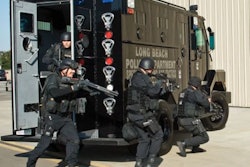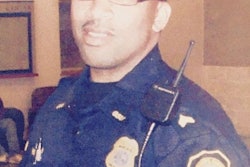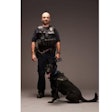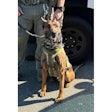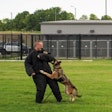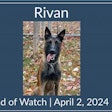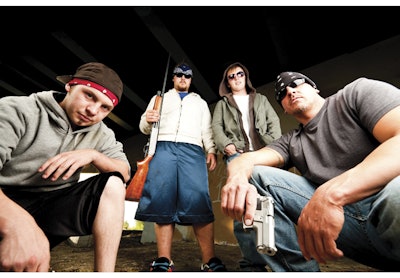 Photo: iStockphoto.com
Photo: iStockphoto.com
Just as the recent unrest in Baltimore began in earnest, police officials in the city announced they had received a credible threat against area law enforcement. A coalition of three gangs—the Crips, Bloods, and Black Guerilla Family—was planning to target and "take out" Baltimore officers.
While the threat abated after the well-publicized rioting and looting, the announcement about the gang coalition illuminated what has become a recurring issue for law enforcement nationwide, and internationally: the rise of the "super gang," an affiliation of distinct criminal organizations—temporarily or permanently—to pursue mutually beneficial strategies and/or profits.
Growing Concerns
Organized criminal gangs working together is by no means a new development. For years, the Mafia both brought together and frequently put at odds networks of family-based criminal organizations in major U.S. cities. The Mafia is a super gang, if there ever was one, and it remains a threat today. And recently, the Mafia has worked with al-Qaeda, as well as with U.S. outlaw motorcycle gangs, (most notably The Hells Angels) who often serve as effective tools in making someone pay up, to carry out illegal activities, according to Jennifer Hesterman, author of "The Terrorist-Criminal Nexus."
Gang alliances are most often a product of geographic convenience, profit-making opportunity, and business efficiency. Although the nature of each relationship varies by region, many are opportunistic, loose-knit partnerships arranged to advance a particular line of business such as drug trafficking and/or weapons smuggling. Regardless, such alliances pose even greater challenges for law enforcement agencies, which almost universally tend to be under-resourced and underfunded.
The activities of Mara Salvatrucha (MS-13) provide a prime example of how one gang has been able to spread its influence—and its highly profitable narcotics trade—establishing routes and networks spanning local, national, and international borders. Responding to the U.S. government policy of mass deportations of Salvadorans, MS-13 uses its considerable influence to ally itself with warring Mexican drug cartels, recruit young people, and spread its influence to locations in numerous countries throughout the Western hemisphere.
Evidence also suggests Hezbollah has established a strong base throughout Latin America over the past 10 years or more and is now working in close cooperation with Mexican gangs to launder money, smuggle people, and finance terrorism.
MS-13, Hezbollah, Latin American cartels, the Mafia, outlaw motorcycle gangs, and even the IRA are all groups with varied and divergent interests and philosophies, yet they are clearly willing to work together with other criminal gangs to capitalize on—and profit from—each other's particular skills and assets.
Increasingly sophisticated and left unchecked, super gangs are expected to continue to grow along with their profits from such high-risk activities as drug distribution, drug transportation, and the commission of violent crimes to enforce drug payment and protect drug transportation corridors from rival usage.
Social Networks
Working both for and against law enforcement in this escalating battle with super gangs is the increasing use of ever more sophisticated technology.
Super gangs are using social media and the Internet to aggressively recruit not only other organized gangs, but vulnerable individuals such as juveniles, immigrants, drug users, prostitutes, and others who may feel disenfranchised to assist them in their criminal pursuits or, in the case of ISIS, serve as lone wolf terrorists. Such strategies allow gang leaders to remain largely unknown to their recruits, as well as to law enforcement, as they are shielded by layers of foot soldiers. With no clear gang affiliations, recruits are often sent—sometimes at considerable distances—to commit crimes. And when they are caught, law enforcement often has little if any evidence linking the perpetrator to the leader or even to the gang.
Conversely, social media is also helping law enforcement identify and capture suspects. A prime example of this is the "Felony Lane Gang," a loosely organized, national network of criminals suspected of stealing tens of millions of dollars in at least 34 U.S. states.
Felony Lane Gang crimes utilize a common approach. Perpetrators steal victims' purses, checkbooks, and identity cards by smashing car windows, and then forge checks on the victims' accounts. One typical strategy for executing this scheme is to send a gang recruit, often disguised to appear as the victim, to use the drive-through lane at a local bank, which has been dubbed the "felony lane" by law enforcement, to cash the fraudulent checks. To date, the gang has defrauded literally thousands of individuals, banks, insurance companies, and rental car operations across the country.
Several Felony Lane Gang members have not been able to resist posting photos of their stolen currency on social media sites, giving police valuable evidence and helping lead to arrests.
Fighting Back
With more sophisticated, savvy, and globally minded super gangs making the utmost of modern technologies, does law enforcement have any chance at all?
Actually, the answer is yes. Police increasingly are using technology to analyze, investigate, and prosecute the activities of super gangs nationwide and even worldwide. A recent survey of nearly 300 law enforcement officials throughout the U.S. conducted by Wynyard Group underscored the growing interest in, and use of, crime fighting software. A bit more than a third (35%) said their agencies already use analytic software, while 45% indicated that limited budgets were a barrier to adoption. Taking a longer term view, however, nine of 10 survey respondents said they believe crime-fighting software will soon become the industry norm.
The good news is that there are an increasing number of crime analytics software tools to help law enforcement agencies and their investigators to connect the dots and address crime by following and understanding criminals' digital footprints.
Advanced crime analytics tools rapidly process and analyze large volumes of data legally sourced as part of an investigation from numerous sources, including mobile telephone service providers, banks, departments of motor vehicles, credit card companies, and utility companies.
Effective advanced crime analytic tools can and should help law enforcement professionals resolve multiple identities, find a single person of interest, and discover relationships between perpetrators and networks of relatives, friends, colleagues, and acquaintances or help prevent crime by disrupting the relationships. Using anomaly detection to quickly discover suspects who are acting inconsistently with their usual behavior, advanced crime analytics tools also help unravel connections hidden within data from disparate sources like social media chatter, financial transactions, and third-party data.
An effective crime analytic platform consists of advanced algorithms, machine learning, entity extraction, context-aware visualization, rules-based alerts, and intuitive workflows to help discover and present to the users entities or networks of interest, relationships, patterns, and anomalies.
Powerful analytics software puts analysts and investigators in control of all the information, giving them the ability to identify threats, vulnerabilities, and connections with minimal effort. It removes the time-consuming and inefficient manual processes involved in large-scale investigations with lots of data from disparate sources.
How this works is illustrated by law enforcement's ongoing effort to crack the Felony Lane Gang. A consortium called the Felony Lane Gang Working Group composed of 142 police departments and other law enforcement agencies throughout the United States is using Wynyard's Advanced Crime Analytics to share information across jurisdictions, warn banks about Felony Lane Gang operations, and improve participating agencies' ability to identify and apprehend suspected members of the super gang.
Using analytics software to perform link analysis, mapping, visualization, and other techniques to gain often unexpected insights that can aid investigators, Felony Lane Gang Working Group analysts have been able to determine that Felony Lane Gang crews even have specialized functions. There are "cashers" in charge of cashing the stolen checks; "jack boi's" or "jackboys" serving as the muscle, watching the cashers to make sure they don't run away; and "renters" who handle the car rentals.
Using advanced crime analytics to detect and disrupt organized crime structures, and to identify individuals and organizations of interest, helps police agencies exploit weaknesses in crime networks. These tools can assist agencies in assessing and managing risks while still protecting the identities and privacy of targeted individuals. And identifying, supporting, and protecting the vulnerable from gangs is a cross-agency responsibility requiring an understanding of potential offenders, victims, and the ever-changing risk environment.
But early identification is often compromised by traditional agency-centric, stove-piped, and reactive systems that fail to provide a current, single view of a person of interest or highlight the escalating risk of an offense occurring.
With a shared technology such as advanced crime analytics, agencies have the ability to leverage the masses of data available to them, and have the potential to more clearly see the relationships between victims and known offenders to create a fuller, more holistic picture.
Members of gangs are often known by multiple government and enforcement agencies. Using crime analytics, data can be shared and used by different law enforcement agencies that have an interest in the same data. Agencies can significantly reduce manual data checking, dramatically increase their ability to share critical information, collaborate on workflow-dependent tasks, and provide frontline officers with actionable intelligence to directly target offenders.
For More Information visit The Wynyard Group.
Louis F. Quijas is senior vice president of the Security Technology Alliance and a senior advisor to the Wynyard Group. He has served as assistant secretary for the Office for State and Local Law Enforcement (OSLLE) in the Department of Homeland Security; assistant director at the FBI; and chief of the High Point (N.C.) PD.




